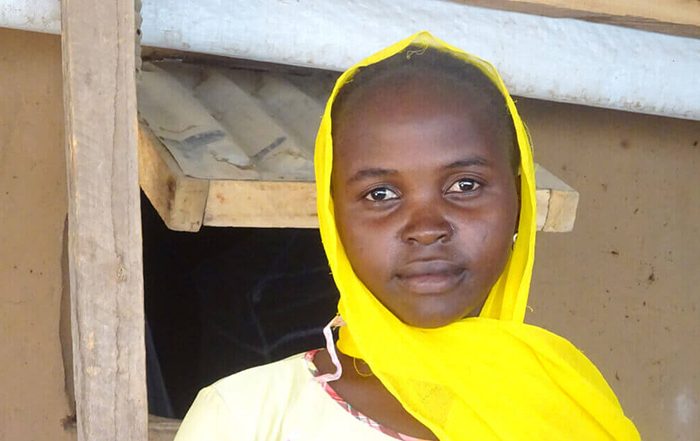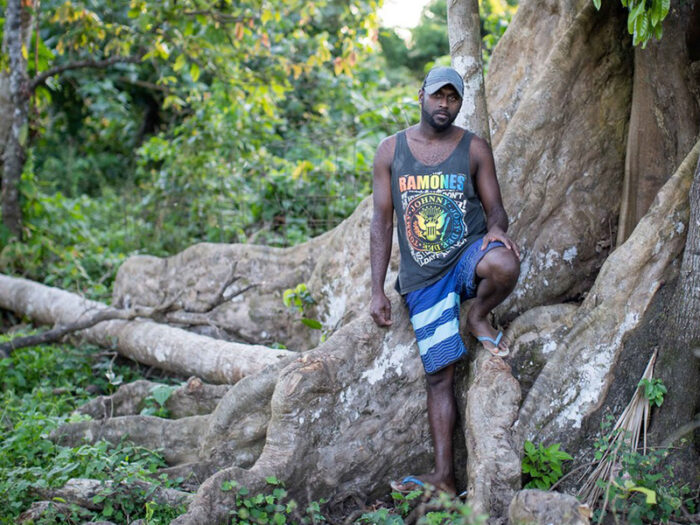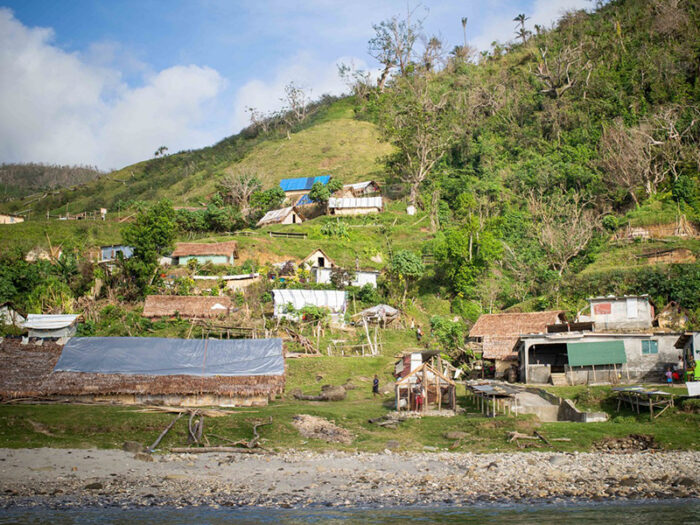
Life as a seamstress in Minawao Camp
Esther saw her family getting slaughtered by Boko Haram. She escaped, settling in Minawao camp and becoming a seamstress.
In April 2020, Cyclone Harold made landfall in Vanuatu as a Category 5 cyclone, bringing devastation to communities in the north.
It was the strongest cyclone to hit the islands since Cyclone Pam in 2015. People living in its direct path admitted they had never seen anything like it before.
Cylcone Harold destroyed thousands of houses, damaged food crops, and caused widespread power outages.
The powerful storm completely flattened some communities, with electricity posts broken in two and roofs torn off by the menacing cyclonic wind.
Sadly, climate change is causing more extreme weather events like Cyclone Harold.
Read on to see how the cyclone affected families like John’s.


When the storm hit, John, his wife, and four children stood together in their house, the bamboo walls and tin roofing no match for the terrifying cyclone raging around them.
Scared for his family’s life, John decided they would join his brother in his brick house.
He said, “The two of us ran down, me with my brother. He carried one girl, I carried the other and we all ran to his house. Then we came back for the two boys.”
Not long after moving his family to the safety of his brother’s house, the storm ripped John’s roof off its rafters.
“When I looked out a small space in the window down the hill [to my place], I saw that the light was no longer there. Then I knew [the roof] had all flown away.”
But even in John’s brother’s house, they couldn’t escape the storm. One of the shutters flew open and rain poured in, making everything wet.
Using buckets, the men gradually emptied the water from the house. And when the storm lulled, they ran outside to nail back the window shutters. John recalls:
“We got a fright when the [wind suddenly changed]”. The eye of the storm had passed and the intensity of the wind coming from the ocean was now reaching full force. John had just made it back inside when the first piece of tin flew off the roof.
“The rain came inside. We waited and waited, then the veranda blew away.” John was worried the door would blow out too.
“I said ‘If your door comes out, we don’t know where else we can go now. We have to stay here, if someone dies, or something, then that’s how it is.
“So, after the veranda blew away, the two of us held the door, we put a bookshelf against the door [and] we nailed it in to hold it there. We held tight onto the door again all the way till morning.”

The next morning, John and his brother took all the nails out of the door and moved the bookshelf, only to find devastation everywhere they looked – including his own home.
John had to climb over fallen trees and piles of debris to reach his parent’s home and check if they were safe.
He didn’t waste any time repairing his home. The family stayed with his brother for a month whilst he collected all the tin sheets and straightened them.
John said he was thankful for the tarpaulins he received from ShelterBox in the wake of the cyclone. “It helped me a lot,” he said, “I pulled the tarpaulin over the roof, so that when it rained, it just fell on the tarp and ran down. After the cyclone there was lots and lots of rain.”
It is estimated that Cyclone Harold affected 159,000 people just like John.
It will take many years for the affected communities to rebuild their homes and lives to where they were before the cyclone.
John, who lost all the products of his growing solar business to the cyclone, said it is about starting small.